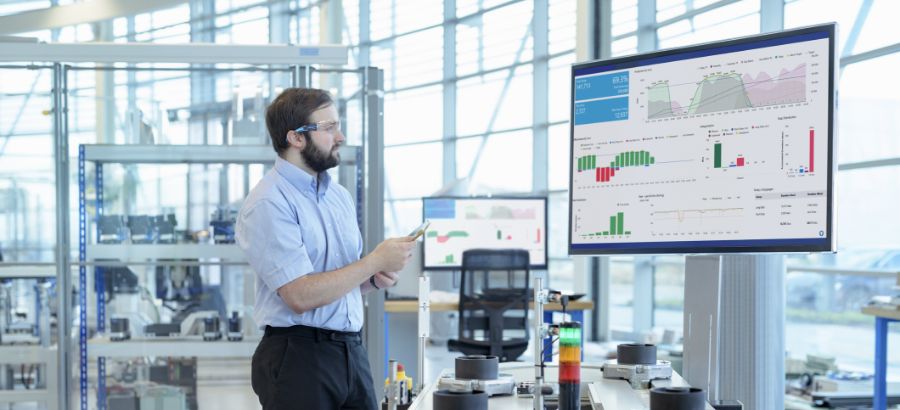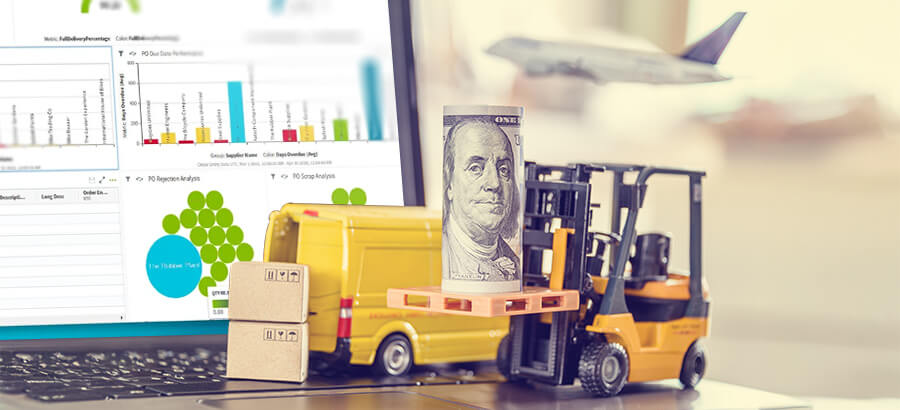There is a common cliche that necessity is the mother of invention – and by extension, innovation. The past two and half years have certainly brought a variety of challenges and opportunities that have made innovation not just a preference, but essential for manufacturers and distributors to thrive into the future.
According to our recent SYSPRO Global Research report, 70% of manufacturers and distributors experienced supply chain disruptions, while 60% of businesses found themselves unable to engage with customers or suppliers. This, together with sudden stock shortages and a surge in the growth of e-commerce is now requiring manufacturers to innovate more effectively.
A practical way that manufacturers can do so is firstly through using data in more comprehensive ways and secondly by embracing digitization to optimize their operations for the future.
Optimizing the use of data for manufacturers
Data should never be used in isolation, but rather, manufacturers and distributors should mesh a complete view of all internal and external factors impacting the business.
A simple example of this would entail considering inventory and stock on hand (internal data) along with changes in weather patterns due to climate change (external data), and how both factors affect a factory’s ability to deliver on its orders. As well, countries now need to consider regional influences alongside global ones. Even as stock may be on hand, some external scenarios that could unexpectedly disrupt operations include:
- A sudden storm that grounds airplanes or impedes ports
- The escalation of the war in Ukraine
- A new phase of the pandemic
Any of these scenarios may unexpectedly make bringing goods into a country, and manufacturing and distributing products, more difficult. Responding to any of these cases requires having accurate, real-time and relevant data about one’s operations to react and make decisions. Having accurate data about what is happening on the factory floor is essential as it empowers manufacturers to leverage KPIs to better monitor machine maintenance, ensure the quality of goods being produced and ensure supply chain optimization.
Obstacles on the data journey for manufacturers
The main problem I see is that some manufacturers lack a nimble system to collect accurate, real-time data which will enable them to operate more efficiently. Secondly, most manufacturers lack a key role within the organization, that of a data scientist or data analyst. In today’s world, data is the commodity of choice, and knowing what to do with the right data and turn it into actionable insight is imperative. Frequently I see many organisations, although they collect data, they fail to collect the right data.
Without that, they don’t have a necessary ingredient for analytics that would yield actionable insight and support making the best strategic decisions possible for the business. To address this obstacle, I encourage manufacturers to have a data specialist on hand. To really innovate though, I suggest building a transformation team, consisting of a data scientist, business analyst and technology advisor, which would be dedicated to advising them how to best use their data and the latest technologies to innovate in their manufacturing vertical.
Automation, the first step towards digital transformation
Digital transformation is often referred to as a journey because it is a long-term ongoing goal, rather than a short-term accomplishment that an organisation can tick off. It entails several shorter steps that need to be taken, beginning with automation and then turning to digitalization and using AI and machine learning.
When we look at enabling innovation through embracing digital transformation, a key trend – and the first step on the journey – those manufacturers and distributors need to incorporate is automation. I want to stress that automation does not exclude the value of workers, but rather augments their jobs and increases innovation. Automation can be used to streamline processes using robots, along with the use of computer vision and artificial intelligence. For example, artificial intelligence can be combined with spatial awareness to define safer routes for pickers. Just one pragmatic application of this would enable a worker on foot and one in a forklift being guided by AI to be able to better find and pick up items within a warehouse without bumping into each other.
Some other standout benefits of AI infused automation include:
- Increased operational visibility within a warehouse, helping to optimize how goods are transported
- Insight into where operational improvements could be made.
- Increased safety and less on the job injuries in the warehouse and on the factory floor.
Internet of everything
Another key technology that manufacturers should be using to fuel their digital transformation as I have outlined when looking at the future of manufacturing is the Industrial Internet of Things (IIoT), specifically by using sensors to collect relevant data.
For example, with the use of IoT sensors, manufacturers can be warned ahead of a breakdown when a machine needs maintenance, saving themselves the costs associated with a breakdown as well as downtime.
As well, IoT can be used to deliver information on how long it takes to manufacture a particular product; and this data that can be used to fuel greater innovation.
I would therefore encourage decision makers to seriously consider how they can implement automation and IIoT within their operations.
Preparing for the future
As I look at where more fully enabling innovation could lead in a manufacturer and distributors context, I see it leading towards dark factories, or fully automated factories, and dark warehouses. The term refers to a warehouse which is fully automated, and goods can be moved, sorted, packed and exclusively handled by robots, and the operations can continue 24/7. In a dark warehouse, only a few personnel are needed to manage the needed machines and software.
Dark warehouses not only offer cost savings, but they also offer some environmental ones as well and help reduce injuries otherwise incurred by workers. As with smart factories, dark factories will enable manufacturers to take advantage of a continuous stream of quality, relevant data from the factory floor that they can use to their benefit as discussed earlier. As well, dark factories will greatly enable manufacturers to increase their efficiencies and thus grow the business.
ERP to drive digital transformation
At the core of using data in new ways and embracing digital transformation is ERP, as it enables organizations to consolidate data, often existing in silos, and ready that data for analysis so that data can be transformed into actionable insight. ERP systems further contribute to enabling innovation when used in manufacturing, as they too are evolving.
For the past several decades, ERP systems have been monolithic applications, but that is changing. they are now becoming more platform based, that are more customisable and better able to integrate information from a variety of sources. This will afford manufacturers a greater degree of agility in how they handle data.
Growing need to innovate
It is imperative that manufacturers and distributors accept that data, digital transformation, and the need for innovation are only going to increase. According to global projections, we will reach 18 zettabytes of data by 2025. Digital transformation is not a ‘’set and forget’ endeavour, it is a journey which includes continuous innovation. The pace of change in the world is ten times the rate of change just five years ago and increasing exponentially.
Pragmatically speaking manufacturers and distributors must get used to the idea of continuously transforming their operations to adapt to the world’s demands.
By doing so, manufacturers will not only be able to respond to necessity, they will also be able to grasp the opportunities to become factories of the future and innovate in the face of uncertainty; so as to thrive.






